Ancient Papyrus Reveals Millennia Old Astronomical Secret: The ‘Demon Star’ Algol Does Exist
A. Sutherland - AncientPages.com - In 1943, an ancient papyrus was bought by the Cairo museum.
It was written in Hieratic and although portions of it were eaten away by ants, it was a very precious ancient document.
The papyrus contained three separate books dealing with astronomy. One of the books was the Cairo Calendar, and now it reveals an ancient astronomical secret.
Papyrus Museum, Cairo, Egypt. The oldest Egyptian calendar. Ancient Egyptians knew about Algol, the Demon Star 3200 years ago.
A research team from Finland is now suggesting that ancient Egyptians were familiar with the Demon Star and its odd behavior already 3200 years ago! Researchers performed a statistical analysis of the Cairo Calendar mythological texts, and their analysis revealed that the periods of Algol and the Moon strongly regulated the actions of deities in this calendar.
The period of the binary star Algol was 2.850 days three millennia ago. The study also confirmed that the brightest phases of Algol and the Moon had particularly positive meanings for the Ancient Egyptians.
For religious reasons, the ancient Egyptians have recorded this period into the Cairo Calendar, which describes the repetitive changes of the Raging one. Cairo Calendar may be the oldest preserved historical document of the discovery of a variable star!
Ancient Egyptian scribes wrote Calendars of Lucky and Unlucky Days that assigned good and bad prognoses for the days of the year. The prognoses were based on mythological and astronomical events considered influential for everyday life.
The best-preserved calendar is the Cairo Calendar (hereafter CC) in papyrus Cairo 86637 dated to 1271-1163 B.C.
Algol is remarkable in many ways.
It seemed to defy the general rule of astrophysics that more massive stars evolve faster because the more massive Algol A has not evolved away from the main sequence, but the less massive Algol B has already evolved to the subgiant stage.
This famous "Algol paradox" was finally resolved only about half a century ago. Algol A was less massive than Algol B when this system was formed.
Algol brightens and dims every 2.867 days, a phenomenon first described in semi-modern western astronomy by John Goodricke, who wrote about what he saw with the naked eye back in 1783.
Although it is highly unlikely the ancient Egyptians could have known that the dimming was caused by one of the binary stars passing in front of the other, they recorded Algol's unusual activity on regular basis. The Demon Star's movements were described in the Cairo Calendar that has managed to survive over thousands of years.
Ancient Egyptians were highly sophisticated astronomers who possessed knowledge that inspired them in their daily lives. Astronomical alignments also played a very important role in the orientation of ancient Egyptian temples.
Written by – A. Sutherland AncientPages.com Senior Staff Writer
Copyright © AncientPages.com. All rights reserved. This material may not be published, broadcast, rewritten or redistributed in whole or part without the express written permission of AncientPages.com.
More From Ancient Pages
-
 Tree Rings On the Oregon Coast Show Evidence A Tsunami That Struck The Pacific Northwest In 1700
Archaeology | Sep 3, 2021
Tree Rings On the Oregon Coast Show Evidence A Tsunami That Struck The Pacific Northwest In 1700
Archaeology | Sep 3, 2021 -
 Mysterious Sleeping Beauty Of Loulan Mummy Is Still Perfectly Preserved After 3,800 Years!
Civilizations | Oct 30, 2014
Mysterious Sleeping Beauty Of Loulan Mummy Is Still Perfectly Preserved After 3,800 Years!
Civilizations | Oct 30, 2014 -
 More Than 10,000 Pre-Columbian Earthworks Remain Hidden Throughout Amazonian Forests
Archaeology | Oct 5, 2023
More Than 10,000 Pre-Columbian Earthworks Remain Hidden Throughout Amazonian Forests
Archaeology | Oct 5, 2023 -
 On This Day In History: Sir Francis Drake Sets Sail On His Round-The-World Voyage – On Dec 13, 1577
News | Dec 13, 2016
On This Day In History: Sir Francis Drake Sets Sail On His Round-The-World Voyage – On Dec 13, 1577
News | Dec 13, 2016 -
 Secrets Of Neanderthals’ 130,000-Year-Old Carved Bear Bone Found In The Carpathian Mountains
Archaeology | May 24, 2024
Secrets Of Neanderthals’ 130,000-Year-Old Carved Bear Bone Found In The Carpathian Mountains
Archaeology | May 24, 2024 -
 Sibylline Books: Ancient Prophecies Destroyed By Fire
Featured Stories | Feb 17, 2016
Sibylline Books: Ancient Prophecies Destroyed By Fire
Featured Stories | Feb 17, 2016 -
 Pharos Of Alexandria – One Of The First Lighthouses In The Ancient World
Featured Stories | Sep 1, 2015
Pharos Of Alexandria – One Of The First Lighthouses In The Ancient World
Featured Stories | Sep 1, 2015 -
 Mystery Of Count St. Germain – He Claimed To Have Lived For Several Centuries
Featured Stories | Sep 4, 2014
Mystery Of Count St. Germain – He Claimed To Have Lived For Several Centuries
Featured Stories | Sep 4, 2014 -
 Irish God Ogma – Outstanding Warrior And Inventor Of The Ogham Script
Myths & Legends | Jul 3, 2024
Irish God Ogma – Outstanding Warrior And Inventor Of The Ogham Script
Myths & Legends | Jul 3, 2024 -
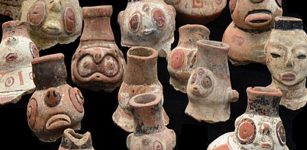 Ancient DNA Tells Story Of Caribbean’s Early Humans
Archaeology | Dec 28, 2020
Ancient DNA Tells Story Of Caribbean’s Early Humans
Archaeology | Dec 28, 2020 -
 Wreckage From Famous Warships Explored In 3D On Anniversary Of Sinking
Archaeology | Nov 22, 2022
Wreckage From Famous Warships Explored In 3D On Anniversary Of Sinking
Archaeology | Nov 22, 2022 -
 Satellite Images Reveal A Mysterious Ancient Site On A Remote Island Is Much Larger Than Previously Thought, Prompting New Questions
Archaeology | Nov 28, 2024
Satellite Images Reveal A Mysterious Ancient Site On A Remote Island Is Much Larger Than Previously Thought, Prompting New Questions
Archaeology | Nov 28, 2024 -
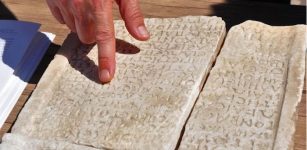 Mysterious 1,800-Year-Old Roman Marble Inscription Found In The Ancient City Of Aigai Deciphered
Archaeology | Oct 5, 2022
Mysterious 1,800-Year-Old Roman Marble Inscription Found In The Ancient City Of Aigai Deciphered
Archaeology | Oct 5, 2022 -
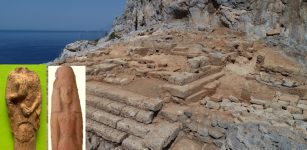 Secrets Of The Ancient Temple Of Dimitra At The Acropolis Of Falasarna Revealed By Archaeologists
Archaeology | Nov 19, 2022
Secrets Of The Ancient Temple Of Dimitra At The Acropolis Of Falasarna Revealed By Archaeologists
Archaeology | Nov 19, 2022 -
 Ancient DNA Reveals Easter Island’s Population Collapse Never Occurred
DNA | Sep 16, 2024
Ancient DNA Reveals Easter Island’s Population Collapse Never Occurred
DNA | Sep 16, 2024 -
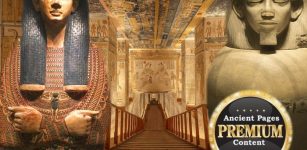 Forbidden Antediluvian Egyptian Secrets Revealed By Initiated Masters Show Most We Know About Egypt Is Wrong
Featured Stories | Aug 6, 2020
Forbidden Antediluvian Egyptian Secrets Revealed By Initiated Masters Show Most We Know About Egypt Is Wrong
Featured Stories | Aug 6, 2020 -
 Who Is Buried In The Extremely Well-Preserved 2,600-Year-Old Celtic Chamber Tomb Found Near Riedlingen, Germany?
Archaeology | Oct 24, 2024
Who Is Buried In The Extremely Well-Preserved 2,600-Year-Old Celtic Chamber Tomb Found Near Riedlingen, Germany?
Archaeology | Oct 24, 2024 -
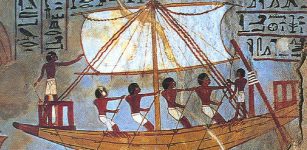 Mysterious Sherbrooke Stones – Did Africans Visit North America 2,500 Years Ago?
Artifacts | Nov 23, 2017
Mysterious Sherbrooke Stones – Did Africans Visit North America 2,500 Years Ago?
Artifacts | Nov 23, 2017 -
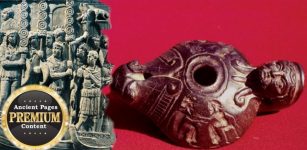 Mysterious Ancient Oil Lamps In Ohio And Wisconsin – Evidence Of Pre-Columbian Contact?
Artifacts | Dec 20, 2017
Mysterious Ancient Oil Lamps In Ohio And Wisconsin – Evidence Of Pre-Columbian Contact?
Artifacts | Dec 20, 2017 -
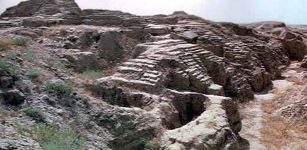 Ashur – First Capital And Powerful Religious Center Of The Assyrian Empire
Featured Stories | Jun 28, 2019
Ashur – First Capital And Powerful Religious Center Of The Assyrian Empire
Featured Stories | Jun 28, 2019

